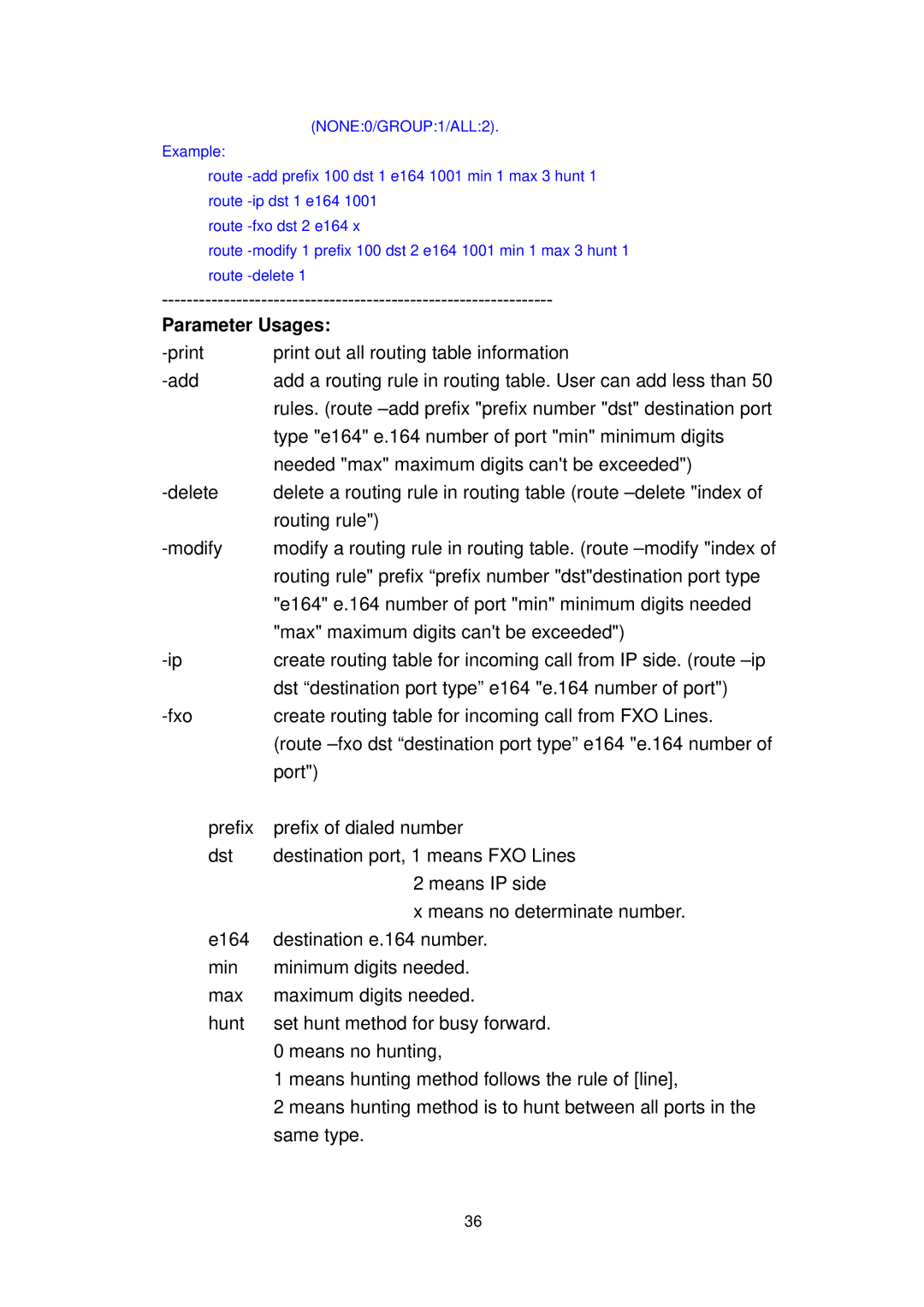(NONE:0/GROUP:1/ALL:2).
Example:
route
route
route
route | |
Parameter Usages: | |
print out all routing table information | |
add a routing rule in routing table. User can add less than 50 | |
| rules. (route |
| type "e164" e.164 number of port "min" minimum digits |
| needed "max" maximum digits can't be exceeded") |
delete a routing rule in routing table (route | |
| routing rule") |
modify a routing rule in routing table. (route | |
| routing rule" prefix “prefix number "dst"destination port type |
| "e164" e.164 number of port "min" minimum digits needed |
| "max" maximum digits can't be exceeded") |
create routing table for incoming call from IP side. (route | |
| dst “destination port type” e164 "e.164 number of port") |
create routing table for incoming call from FXO Lines. | |
| (route |
| port") |
prefix | prefix of dialed number |
dst | destination port, 1 means FXO Lines |
| 2 means IP side |
| x means no determinate number. |
e164 | destination e.164 number. |
min | minimum digits needed. |
max | maximum digits needed. |
hunt | set hunt method for busy forward. |
| 0 means no hunting, |
| 1 means hunting method follows the rule of [line], |
| 2 means hunting method is to hunt between all ports in the |
| same type. |
36
